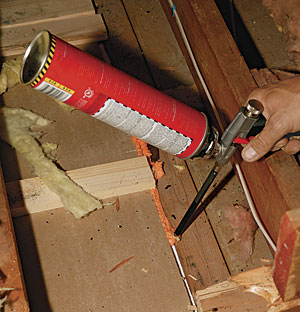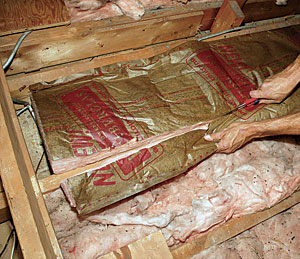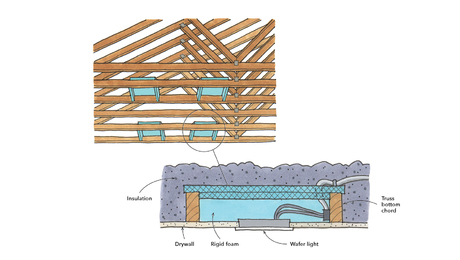Question: Two problems developed in my attic recently that no one can figure out. First, after I installed roof vents per my roofer’s recommendation, icicles and frost formed on the underside of the roof sheathing in the attic and ice on the two gable-end windows. Second, my heating bills went way up after I installed insulation between the floor joists in the attic. Any ideas? -Hagan Davis, Middlebury, Vermont
Mike Guertin, author of “Attic-Insulation Upgrade” (FHB #200, pp. 68-73), replies:
Your problems are not unusual and are probably the result of the roof vents. Chances are that when the roof vents were added, they permitted more air to leak from inside the house into the attic. Your old unvented roof actually helped to contain air inside your house.
When the roof vents were cut in, the holes in the ceiling then could leak air into the attic at a faster pace. Warm air rises in your house during the winter and increases the pressure on the ceiling, a process called the stack effect. Moisture vapor from bathing, cooking, and the soil around your basement or crawlspace piggybacks on the leaking air. Warm air can hold more moisture vapor than cold air. When the air leaks into the attic during winter, the air cools down, and the moisture condenses on cold surfaces. That leaking air also carries away the energy you paid to heat it.
The insulation you added did nothing to seal the air leaks. Any fibrous insulation (cellulose, fiberglass, cotton, rock wool, or slag wool) lets air leak right through it. If anything, your insulation made the condensation problem worse. The insulation blocked conductive heat loss, so the attic was colder, thereby accelerating the condensation.
The solution is to move your insulation aside and to air-seal the ceiling completely. Then install the insulation with the vapor retarder face down and in complete contact with the ceiling surface. Provided you block all the air leaks, the only moisture vapor reaching the attic will be a small amount of vapor diffusion through the drywall or plaster ceiling. The roof ventilation should be adequate to exhaust diffused moisture vapor before it condenses on the underside of the roof.
Sealed gaps stop drafts
Air leaks through an attic can be a large source of heat loss, especially in homes with vented roofs. Vents create a path for warm, moist air from living spaces below to escape. Insulating the attic floor doesn’t stop the air from escaping. But air-sealing top plates, as well as around places like pipe penetrations and electrical boxes, will.
Spray foam fills large gaps.

Use expandable foam sealant along joints 1/4 in. or larger where drywall meets the top plate and around pipe penetrations. The fire-stop version shown here won’t burn and is required in some situations, depending on local codes.
Caulk and rigid foam work, too.

An acoustical sealant (www.tremcosealants.com) followed by a strip of rigid-foam insulation also seals wide gaps. Acoustical sealant, which remains flexible over time, by itself can be used to fill holes and gaps that are smaller than 1/4 in. wide.
Fill the cavity; don’t stuff it.

After the gaps are sealed, fill the joist bays with insulation. Blown-in cellulose or fiberglass works well between joists. If you’re using faced-batt insulation, though, trim it to fit snugly between joists, and place the paper face down so that it is in continuous contact with the drywall or plaster below.
Fine Homebuilding Recommended Products
Fine Homebuilding receives a commission for items purchased through links on this site, including Amazon Associates and other affiliate advertising programs.

Great Stuff Foam Cleaner

Utility Knife

Nitrile Work Gloves


























